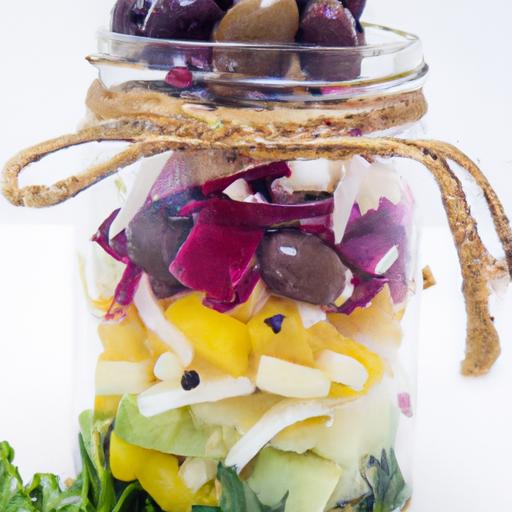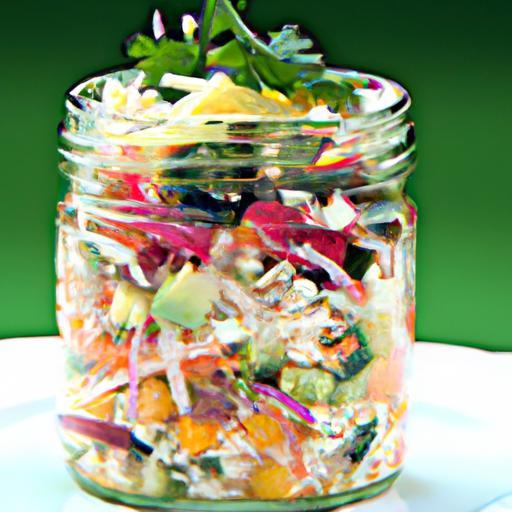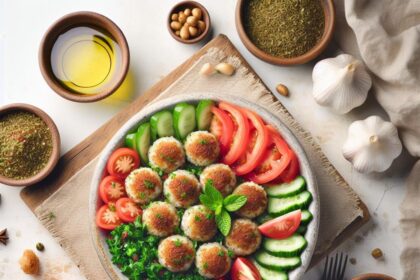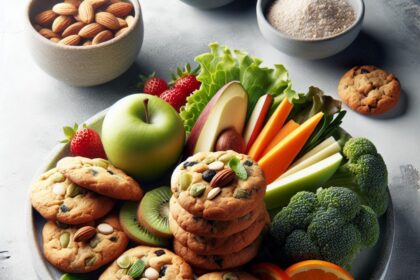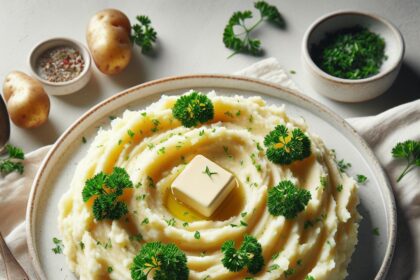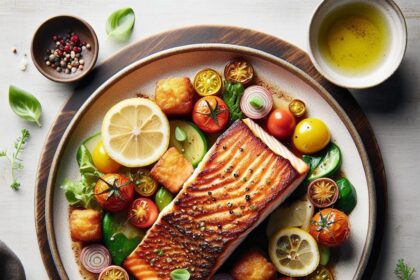There’s something undeniably charming about a jar salad-layers of vibrant veggies, crisp greens, and zesty dressings sealed tight in a clear vessel, ready to brighten your day with freshness and convenience. But beneath this picturesque meal lies a delicate balance: one wrong move and your jar salad can quickly turn from a crunchy delight to a soggy, wilted disappointment. Whether you’re a seasoned mason jar maestro or a curious newcomer, understanding the common slip-ups that spoil freshness is key to keeping every bite as crisp and delicious as the first. Let’s peel back the lid on these pitfalls and discover how to cultivate jar salads that stay vibrant, tasty, and truly grab-and-go perfect.
Choosing the Right Ingredients for Long-Lasting Freshness
Jar Salad Slip-Ups often begin at the grocery store, where selecting the wrong produce can doom your crisp, layered masterpiece from the start. To maintain vibrant freshness throughout the week, focus on sturdy, moisture-resistant greens such as kale, spinach, or romaine rather than delicate lettuces like arugula or butter leaf. Opt for crunchy veggies like bell peppers, cucumbers, and carrots that withstand jar storage beautifully without wilting.
Choose ripe but firm tomatoes and blueberries over overripe varieties to avoid premature mushiness. Consider swapping watery ingredients such as fresh tomatoes or juicy fruits for less juicy forms, like sun-dried tomatoes or sliced apples tossed in lemon juice, which add flavor without sogginess. Proteins such as grilled chicken breast or hard-boiled eggs should be cool and dry before layering to prevent unwanted moisture buildup that accelerates spoilage.
Mastering Layering Techniques to Prevent Sogginess
Layering your ingredients strategically is essential to sidestep common jar salad slip-ups. Begin by placing dressings and wet ingredients like vinaigrettes or juicy tomatoes directly at the bottom where they won’t touch the greens. Next, add dense vegetables such as cucumbers, carrots, or beans-these act as a buffer, soaking up moisture without falling apart. Lighter, leafy greens should be on top, farthest from the dressing, to keep crisp and vibrant.
Incorporate delicate elements like nuts, seeds, or cheese near the top or add them fresh on serving day to preserve their texture. This layered architecture ensures every bite remains crunchy and delicious, enticing you to reach for your jar salad repeatedly during the week.
Sealing and Storage Tips to Keep Your Jar Salad Crisp
Securing your jar salad properly prevents oxidation and moisture intrusion, two culprits behind fast spoilage and dreaded sogginess. Use airtight glass jars with tight-fitting lids, and fill them just shy of the brim to allow gentle shaking before eating. Store your salads upright in the coldest part of your refrigerator, ideally between 34°F and 40°F, to maximize freshness.
If the jar isn’t your serving vessel, quickly transfer contents to a bowl at mealtime to avoid exposing the entire salad to air and moisture. Additionally, avoid stacking multiple jars on top of each other as excess pressure can bruise softer greens near the lid.
Avoiding Common Contamination Traps for Safe and Healthy Salads
Safety is paramount when preparing salads ahead of time. Wash all ingredients thoroughly under cold water to remove dirt, traces of pesticides, and potential bacteria. Dry greens meticulously using a salad spinner or clean towels to minimize moisture. Always use clean utensils and hands when assembling your jar salad to prevent contamination.
Avoid cross-contamination by preparing proteins separately and cooling them fully before adding. When incorporating dressings, choose recipes with natural preservatives like vinegar or lemon juice to inhibit bacterial growth. Finally, consume your jar salad within 3-5 days to enjoy peak flavor safely.
Prep and Cook Time
Preparation: 15 minutes • Assembly: 10 minutes • Refrigeration: Optional, up to 24 hours before serving
Yield
Makes 1 hearty jar salad (serves 1)
Difficulty Level
Easy – perfect for meal prep beginners and seasoned salad lovers alike
Ingredients
- 2 cups chopped kale, stems removed
- 1/2 cup cooked quinoa, cooled
- 1/3 cup sliced cucumbers
- 1/4 cup shredded carrots
- 1/4 cup cherry tomatoes, halved and patted dry
- 1/4 cup cooked and chilled chickpeas
- 2 tbsp crumbled feta cheese
- 1 tbsp pumpkin seeds
- 3 tbsp balsamic vinaigrette (homemade or store-bought, well shaken)
Instructions
- Start with the dressing: Pour the balsamic vinaigrette at the bottom of a clean 16-ounce mason jar, ensuring even coverage to avoid clumps.
- Add dense vegetables: Layer sliced cucumbers, shredded carrots, and chickpeas directly on top of the dressing. These dense ingredients form a barrier to keep moisture away from delicate greens.
- Incorporate quinoa: Spoon in the cooled quinoa next to provide structure and bulk to your salad.
- Add hearty greens: Pack the chopped kale firmly but gently. The kale will stay crisp and fresh when kept dry from the dressing.
- Add tomatoes carefully: Place cherry tomatoes on top of the kale, ensuring they are patted dry to avoid dripping moisture.
- Top with cheese and seeds: Sprinkle feta and pumpkin seeds at the very top to maintain texture and freshness.
- Seal and refrigerate: Secure the lid tightly and store the salad jar upright in the refrigerator for up to 5 days. Shake the jar well before eating to distribute dressing and flavors.
Tips for Success
- Use a salad spinner to achieve perfectly dry greens; moisture causes sogginess.
- Customize your layers: Add grilled chicken or tofu for protein, but ensure it’s fully chilled before layering.
- For a nutty crunch, use toasted nuts or seeds and keep them on top to avoid softening.
- Prep veggies the night before to save time but wait to add delicate greens until the day you plan to eat.
- Experiment with different dressings like tahini or honey mustard, making sure they have good acidity to preserve freshness.
Serving Suggestions
To enjoy your salad at its freshest, shake the jar vigorously to coat the kale and veggies evenly with dressing. Pour into a bowl or eat directly from the jar for a mess-free experience. Garnish with fresh herbs such as chopped basil or cilantro to awaken the flavors. Pair with whole grain crackers or a warm slice of crusty bread for a filling, balanced meal perfect for lunch or a light dinner.
| Nutrition Facts | Per Jar Salad |
|---|---|
| Calories | 320 kcal |
| Protein | 12 g |
| Carbohydrates | 28 g |
| Fat | 15 g |

For more tips on salad preparation and storage, check out our Healthy Salad Prep Tips. To deepen your understanding of food safety, the USDA Food Safety Information is a great authoritative source for safe handling guidelines.
Q&A
Q&A: Jar Salad Slip-Ups – Common Mistakes to Avoid for Freshness
Q1: Why are jar salads so popular these days?
A1: Jar salads are the ultimate grab-and-go meal heroes. They’re portable, visually appealing, and you control exactly what goes into your salad. Plus, the layered design helps keep ingredients fresh longer-when done right!
Q2: What’s the biggest mistake people make when assembling jar salads?
A2: Putting wet ingredients or dressing directly on the veggies! This soggy slip-up turns crisp greens into a sad, wilted mess. The trick is to layer dressing at the bottom, followed by hearty ingredients that won’t soak it up too quickly.
Q3: How should I layer the ingredients in a jar salad for maximum freshness?
A3: Start with the dressing at the bottom, then add sturdy ingredients like beans, grains, or chopped veggies. Next, place delicate items like leafy greens or herbs at the top, farthest from the dressing to stay crisp. Think of it as a delicious upside-down painting in your jar!
Q4: Can using the wrong jar affect the freshness of my salad?
A4: Absolutely! Airtight jars with a secure lid keep your salad fresher longer by locking out moisture and air. Avoid jars that don’t seal well or are too shallow-deeper jars allow for better layering and less pressing of ingredients.
Q5: How long can a jar salad realistically stay fresh in the fridge?
A5: Typically, a well-layered jar salad can last 3 to 5 days in the refrigerator. Remember, freshness depends on ingredients used-some items like avocado or soft fruits may shorten shelf life. Always trust your nose and eyes!
Q6: Is it okay to add crunchy toppings like nuts or croutons in the jar?
A6: Crunchy toppings are best kept separate and added right before eating. Adding them too early lets moisture from veggies and dressing make them soggy. Keep the crunch alive with a side container or stash at the top if space allows.
Q7: Any pro tips on keeping jar salads fresh and tasty?
A7: Yes! Use paper towels layered above greens to absorb excess moisture, seal jars tightly, and keep dressings tangy and acidic (like vinaigrettes) to help preserve freshness. Rotate ingredients weekly to avoid salad fatigue!
Avoid these slip-ups, and your jar salads will be the freshest, crunchiest, and most delicious packed lunches you’ve ever enjoyed!
In Summary
In the quest for that perfect, fresh jar salad, a few simple slip-ups can turn your vibrant greens into a soggy disappointment. But with a little attention to layering, ingredient choice, and storage savvy, you’ll keep every bite crisp and delightful. By sidestepping these common mistakes, your jar salads won’t just survive-they’ll thrive, becoming your go-to fresh meal solution. So next time you pack your jar, remember: freshness is a habit, and with these tips in hand, you’re one step closer to salad success in every jar. Happy layering!